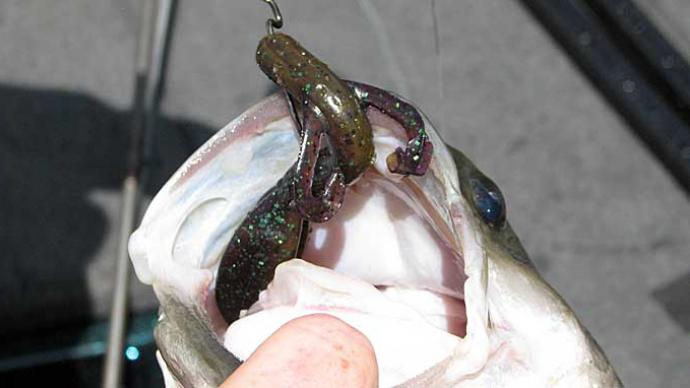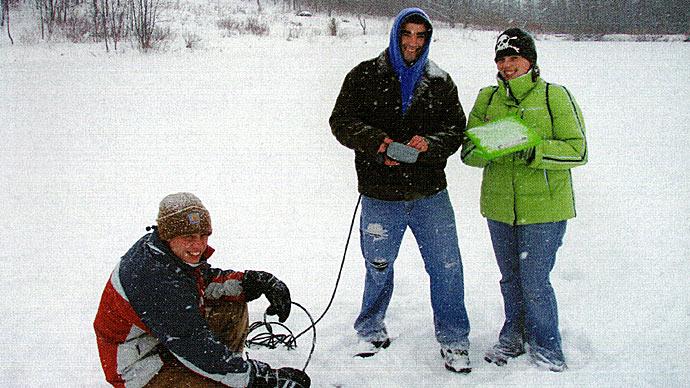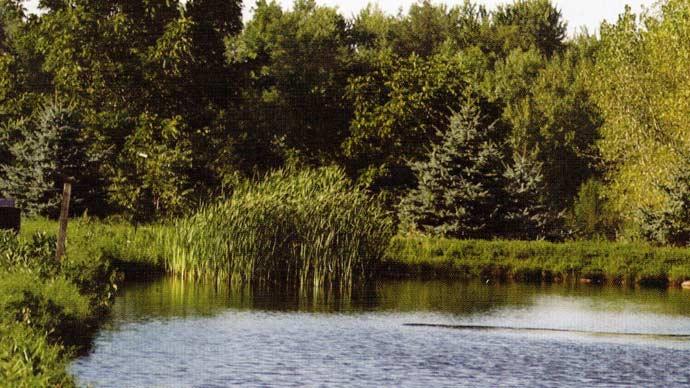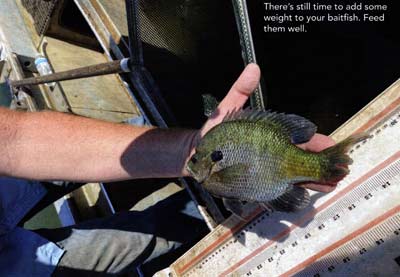
While this article targets northern waters, our southern friends can benefit from the discussion.
For anyone who's read this column for the past umpteen years, you know the focus is on managing water quality. Oxygen throughout the winter, healthy medium, minimal underwater greenery going into winter. No surprise here. That's still the primary focus.
But what about the fishery? What can you do to get set for winter?
Be sure your fish are in the best body condition they can be.
Okay, Pond Boss, exactly what does that mean?
It means your fish need to match or be heavier than standard weights for their lengths. Here's why. Nature's way is to provide opportunities for the best of the best to go into the harshest months in their best shape. That means your fish must be in their best physical health to survive the coldest months. Fish need body fat stores to assist their slowed-down metabolism rates during winter. Without fat, they'll metabolize flesh. That's a bad thing.
When a fish metabolizes its flesh, it loses weight that's difficult to make up.
With stores of body fat, fish stand a better chance to make it through harshness. When they make it, they'll have the tools to continue growing into and through the following season.
For example, people in upstate New York expect their Largemouth bass to top out around 6.5 pounds. That's the "box" thinking. Part of that equation is knowing bluegills are the backbone of the food chain. However, the complicated part is understanding that bluegills only have 75-80 days from the time they are hatched until the water is so cool their growth stops. What that means to the rest of the world is bluegills grow really, really fast in upstate New York and all the other northern tier states. The rub? Bluegills grow so fast in that short window that they outgrow the mouth size of most bass in any given body of water... whether Largemouth bass, smallies, or a long list of other predator fish.
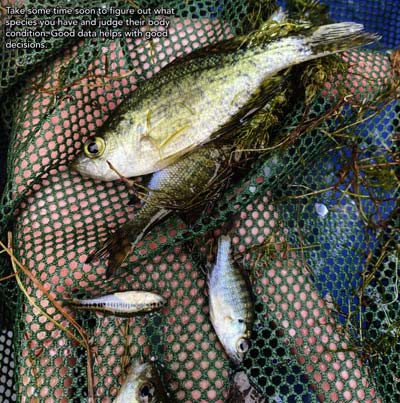
Predators feed furiously for a short period, then as the water temperature drops, they feed as though their time is limited, which it is. Those game fish must build their bodies just to make it through winter.
In the south, bluegills are considered the backbone of the food chain and have as many as four or five spawns each year... over a 300-day growing season. There is a significant advantage there.
Folks in the northern states, manage your fishery for the best fish. Tip:
- Cull the under-performers right now.
- Take out those fish that are obviously underweight.
- Supplement your food chain if your predators have overeaten it.
Sample the fishery now. Sooner is better. If you know the status of your food chain by the end of September, you'll have time to do something about it and give your fishery better odds of coming out of winter in great shape.
Take out skinny fish. Add more baitfish, if necessary. Supplement your bluegill with a high-protein fish food and get them in great shape, too.
Getting your bluegills in their best shape doesn't take much fish food. They'll respond quickly.
Be sure your plant life is under control. When your pond ices up, you can't do much about it. Physically remove excess rooted plant life now...to keep it from over-consuming oxygen during the waning days of winter under ice.
If you judge your fishery now and harvest those fish that need to be removed, bolster your food chain, and get rid of excess plant life, you'll set the stage for a successful ice-fishing season. Better yet, you'll have healthy fish all winter and have things in place for next spring to push your fishery to its next level.
Northern friends, you've got another 6-8 weeks to get things in order. In order to have a fun ice-fishing season...in order to have a sustainable fishery for next spring...in order to set the stage for a great spawn to help push your fishery into the next few years. Understand the predator/prey relationships and set them both up for success. You'll see the results over the winter and in the upcoming years.
Your pond deserves it.
Reprinted with permission from Pond Boss Magazine

